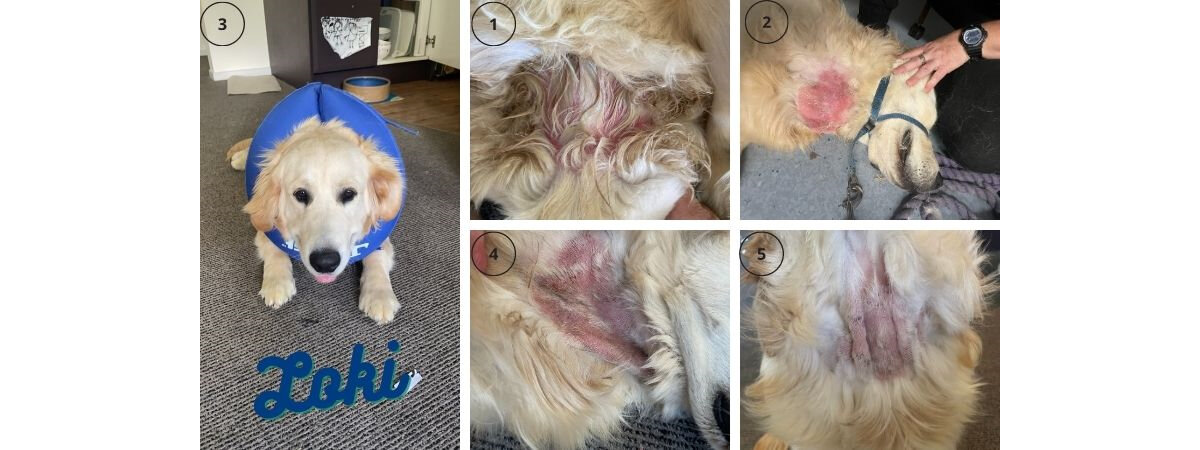Franklin Vets
Franklin Vets - excellence in veterinary care for dairy, farming, lifestyle, equine and household pets. BESTPRACTICE ACCREDITED NZ.
Your account is powered by Storbie. To edit your profile visit my.storbie.com
Your account is powered by Storbie. To edit your profile visit my.storbie.com
This presented as a moist wound on his neck (image 1) with discharge over his fur. This was likely caused by swimming with his collar on and then the wet collar rubbing on his neck.
The raw skin was very tender and it was too painful for him to allow us to clip while he was awake so we needed to sedate Loki to start sorting the hotspot out. After clipping the fur away (image 2) the large size of the infected area was clear to see.
This was cleaned and he was put on a combination of both topical ointment and oral medication. He was also given an inflatable collar so that he couldn’t scratch at the wound (image 3). After 3 days of treatment (image 4) the wound was no longer looking moist but was still inflamed but after 5 days (image 5) it was pretty much healed.
Canine hot spots, also known as pyotraumatic dermatitis or acute moist dermatitis, are red, inflamed skin lesions that appear quickly, ooze, and may contain pus. Hot spots can be found anywhere on a dog’s body, but the most common sites are the head, legs, and hips. They tend to be more common in summer when the humidity is higher, which also coincides with allergy season.
Hot spots are usually caused by self-trauma when a dog scratches an itch so vigorously that it creates a wound that then gets invaded by normal skin bacteria. Many things can cause the initial itch in dogs including:
Most dog hot spots will begin to disappear in a few days after the start of the treatment however some can take up to 3-4 weeks to fully heal.
Franklin Vets - excellence in veterinary care for dairy, farming, lifestyle, equine and household pets. BESTPRACTICE ACCREDITED NZ.




